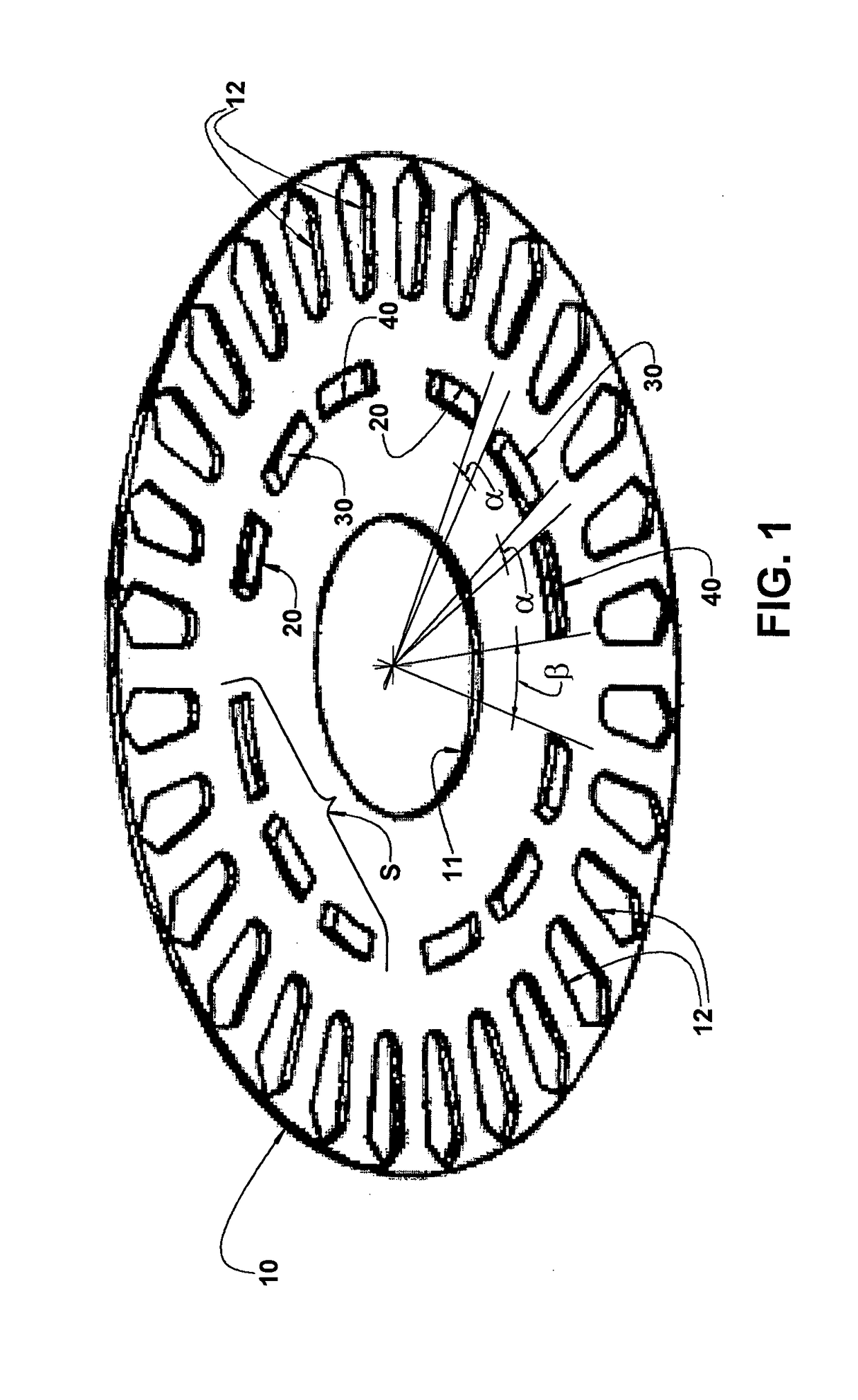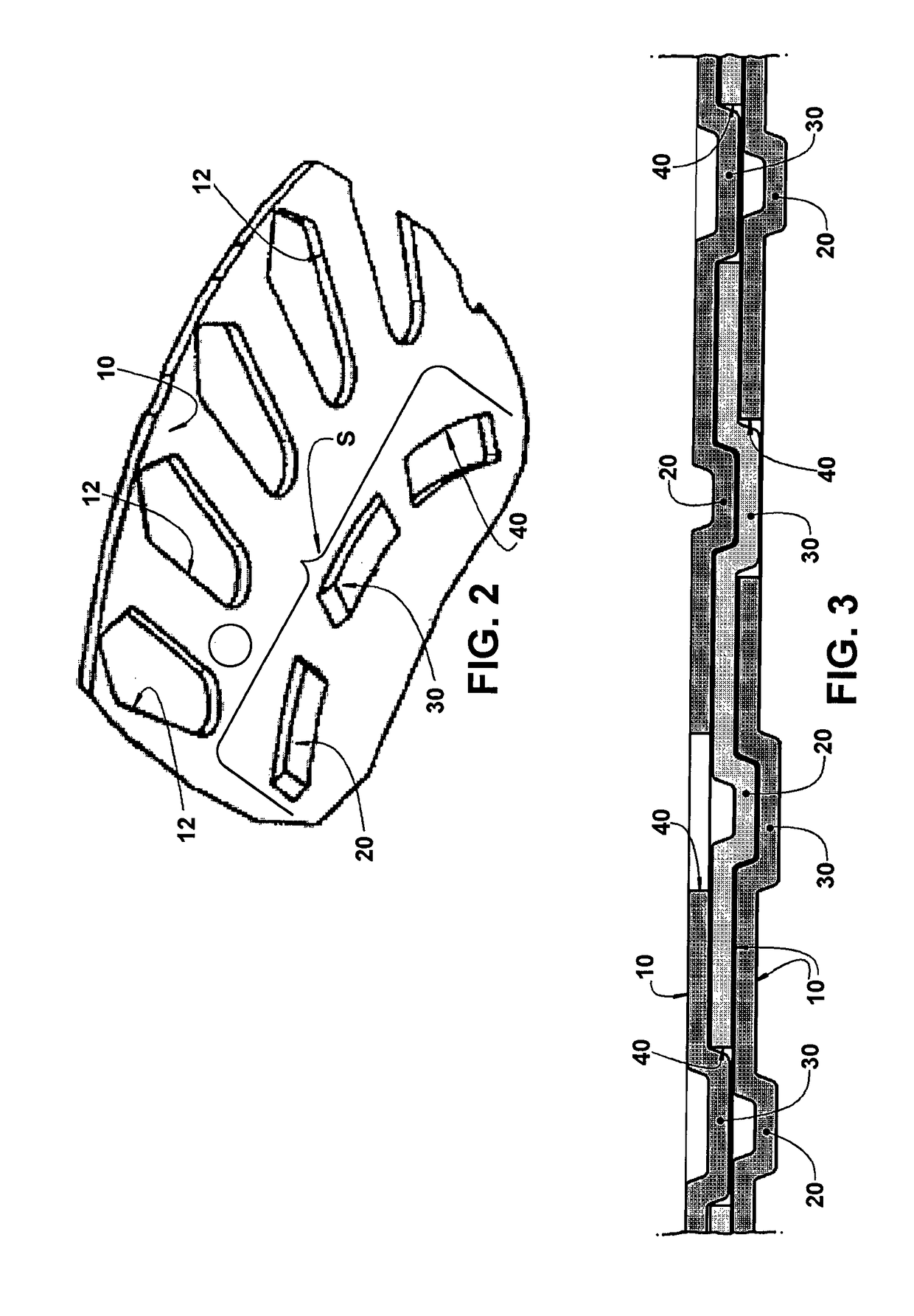Process for the formation of a stack of superposed metallic laminations
a technology of superposed metallic lamination and stacking, which is applied in the direction of magnetic circuit rotating parts, manufacturing stator/rotor bodies, and shape/form/construction of magnetic circuits, etc. it can solve the problems of presenting a fragile axial locking stability, and reducing the useful life of the insertion clamp, so as to increase the manufacturing cost of the lamination, the effect of reliable and efficient axial and rotational locking
- Summary
- Abstract
- Description
- Claims
- Application Information
AI Technical Summary
Benefits of technology
Problems solved by technology
Method used
Image
Examples
Embodiment Construction
[0026]While the description below is related to metallic laminations 10 in the form of circular discs, to be applied in the formation of a lamination stack, for example of an electric motor, it should be understood that the invention can be applied to fasten two or more laminations to each other, for different applications.
[0027]As illustrated in the drawings, the laminations 10 present a central hole 11 which is usually obtained by stamping a metallic plate 1 in a stamping unit 2 provided with a stamping punch 3 and with a support matrix 4 for the already formed laminations 10 and in which the laminations 10 are progressively stacked and locked to each other.
[0028]The lamination stack of the present invention comprises a plurality of superposed metallic laminations 10, each lamination 10 comprising at least one assembly S of coupling elements, said assembly S comprising one insertion clamp 20, one receiving clamp 30 and at least one receiving window 40.
[0029]The insertion clamp 20 ...
PUM
| Property | Measurement | Unit |
|---|---|---|
| metallic | aaaaa | aaaaa |
| displacement | aaaaa | aaaaa |
| shape | aaaaa | aaaaa |
Abstract
Description
Claims
Application Information
 Login to View More
Login to View More - R&D
- Intellectual Property
- Life Sciences
- Materials
- Tech Scout
- Unparalleled Data Quality
- Higher Quality Content
- 60% Fewer Hallucinations
Browse by: Latest US Patents, China's latest patents, Technical Efficacy Thesaurus, Application Domain, Technology Topic, Popular Technical Reports.
© 2025 PatSnap. All rights reserved.Legal|Privacy policy|Modern Slavery Act Transparency Statement|Sitemap|About US| Contact US: help@patsnap.com



